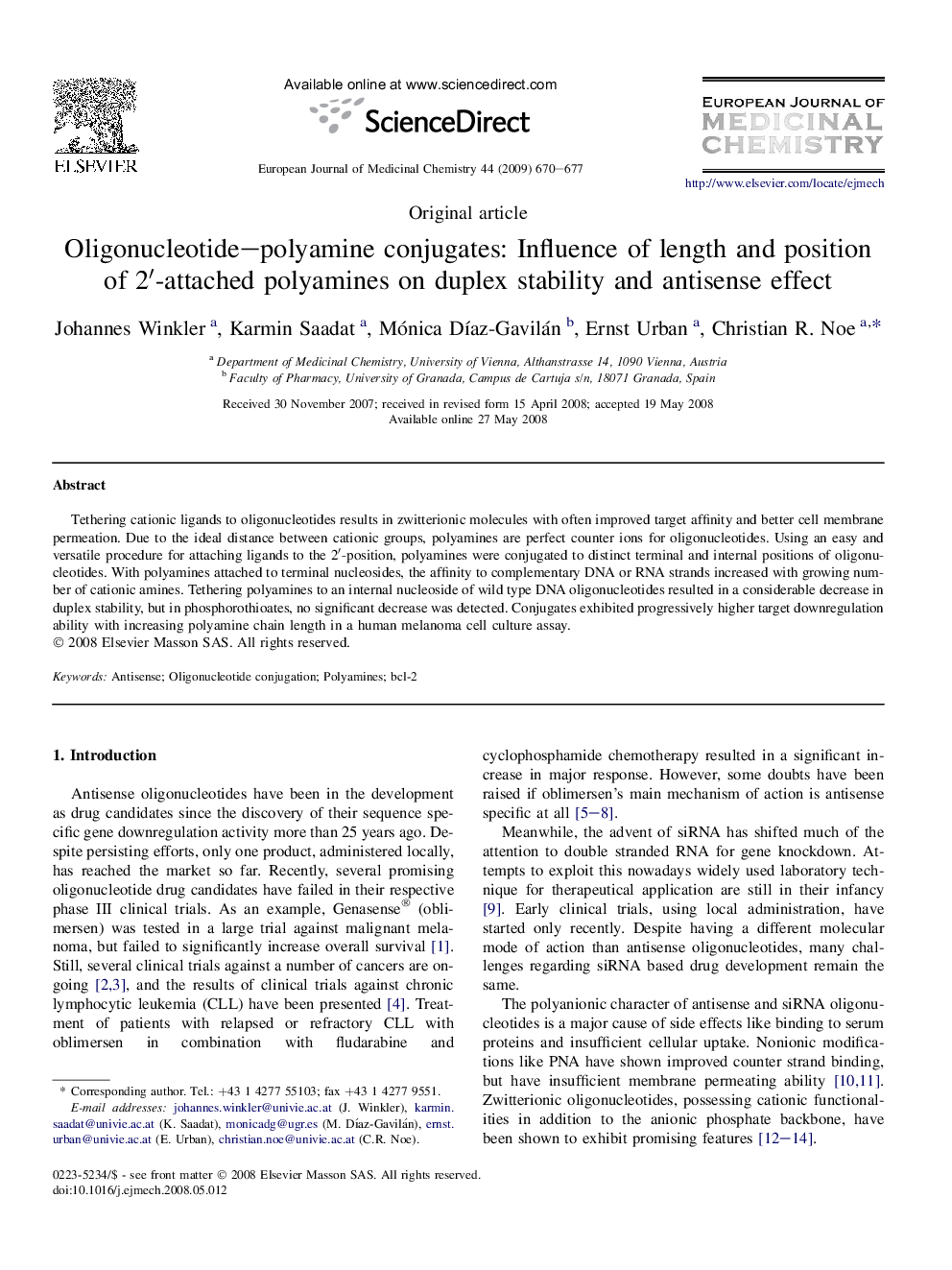| Article ID | Journal | Published Year | Pages | File Type |
|---|---|---|---|---|
| 1395315 | European Journal of Medicinal Chemistry | 2009 | 8 Pages |
Tethering cationic ligands to oligonucleotides results in zwitterionic molecules with often improved target affinity and better cell membrane permeation. Due to the ideal distance between cationic groups, polyamines are perfect counter ions for oligonucleotides. Using an easy and versatile procedure for attaching ligands to the 2′-position, polyamines were conjugated to distinct terminal and internal positions of oligonucleotides. With polyamines attached to terminal nucleosides, the affinity to complementary DNA or RNA strands increased with growing number of cationic amines. Tethering polyamines to an internal nucleoside of wild type DNA oligonucleotides resulted in a considerable decrease in duplex stability, but in phosphorothioates, no significant decrease was detected. Conjugates exhibited progressively higher target downregulation ability with increasing polyamine chain length in a human melanoma cell culture assay.
Graphical abstractFigure optionsDownload full-size imageDownload as PowerPoint slide
